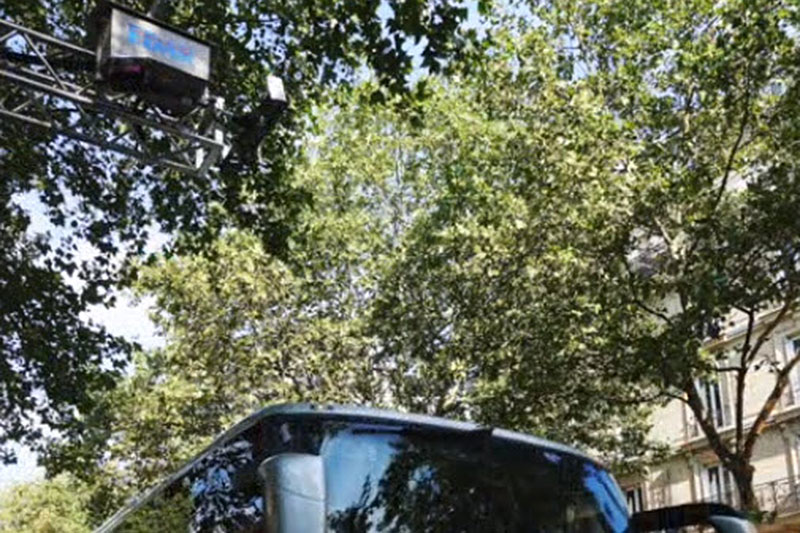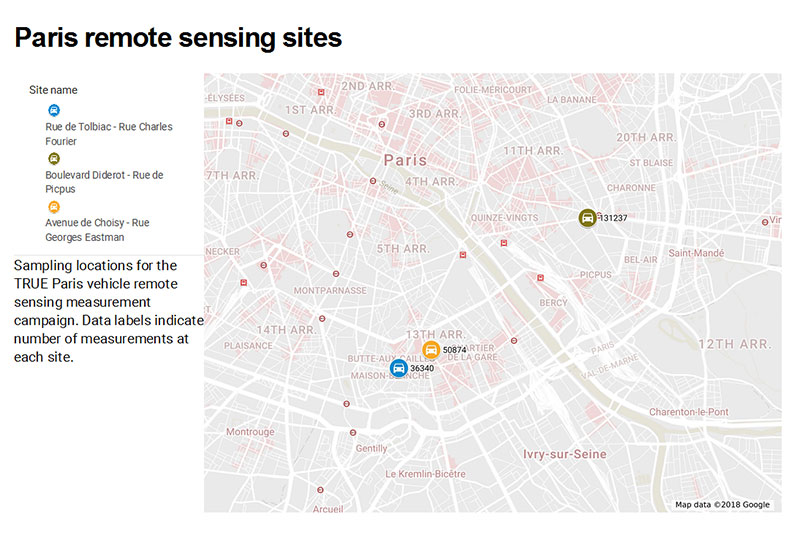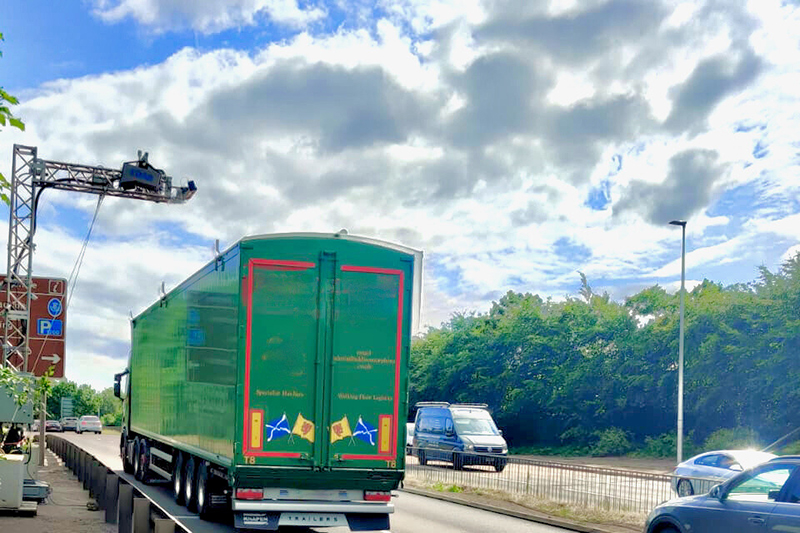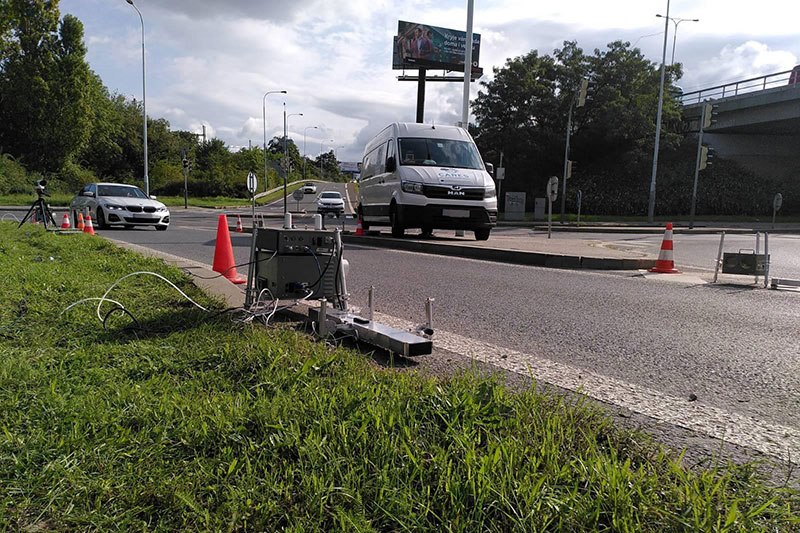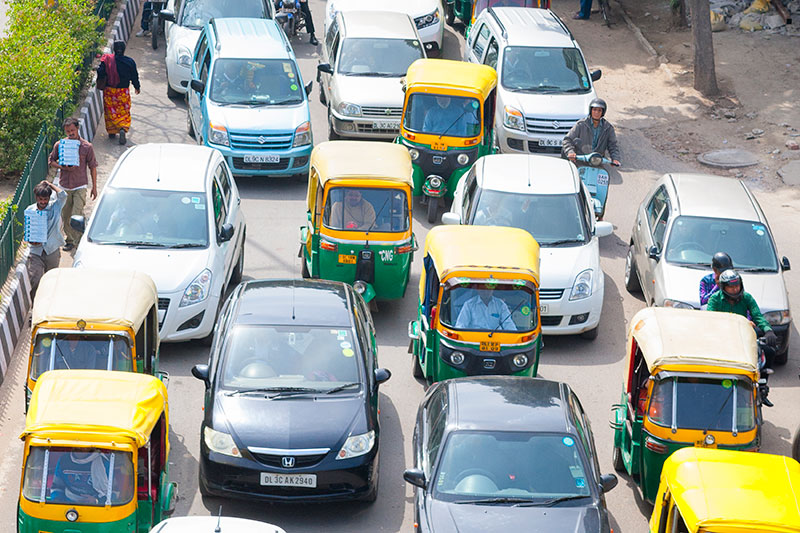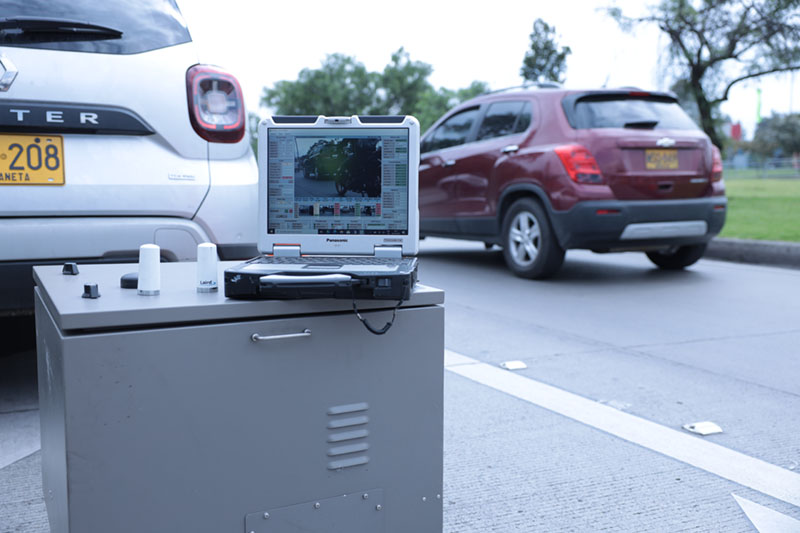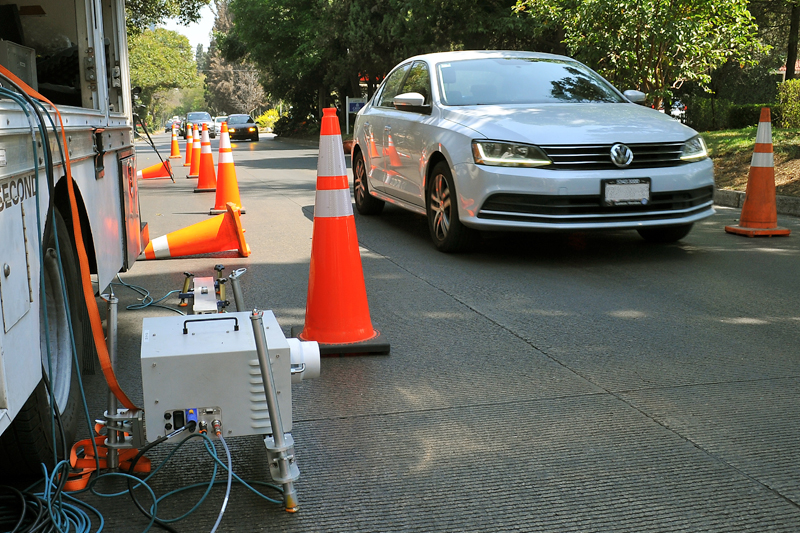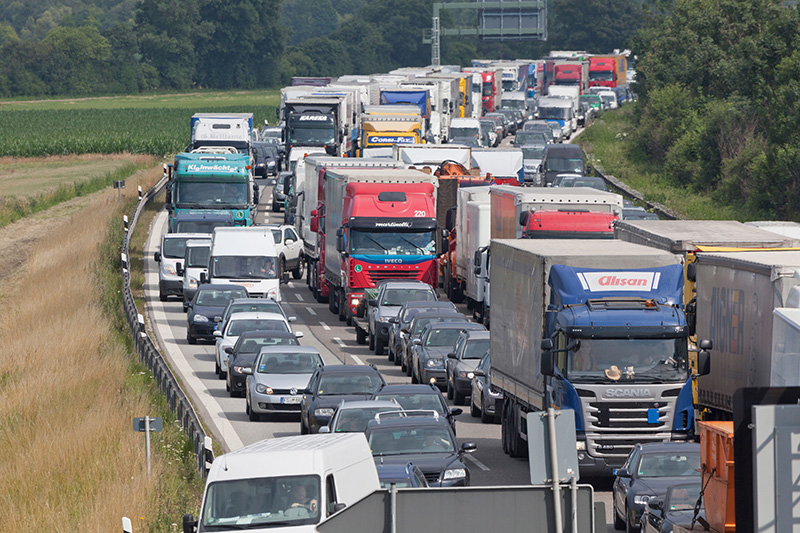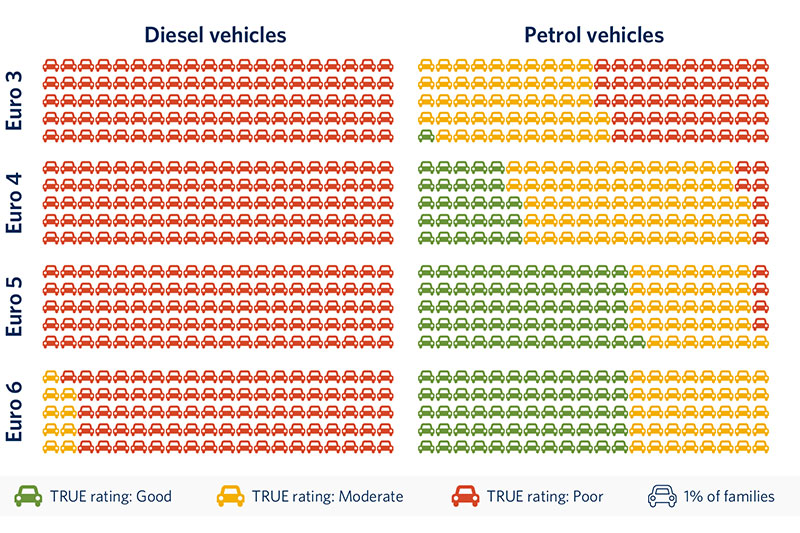Paris working with TRUE Initiative to evaluate real-world vehicle emissions

Earlier this summer, researchers measured pollutant emissions from more than 200,000 vehicles operating on the streets of Paris. This information will help city officials, the citizens of Paris, and other stakeholders to better understand real-world emissions from cars, trucks, and other vehicle types in Paris and to develop effective measures to improve air quality in the city.
According to Airparif, the organization responsible for monitoring air quality in the Paris region, more than 1.4 million Parisians were exposed to levels of air pollution that exceeded European Union standards in 2016. Motor vehicles contribute significantly to this pollution and are thus an important focus of the city government’s strategies to improve air quality in Paris.
To support these efforts, the City of Paris partnered with The Real Urban Emission initiative (TRUE) to conduct an extensive evaluation of pollutant emissions from vehicles operating on the streets of the city. This study was the second of two pilot measurement campaigns supported by TRUE which focus on collecting real-world emissions data from large numbers of in-use vehicles. The "Dieselgate" scandal highlighted the potential for wide discrepancies to exist between vehicle emissions measured in laboratory settings and those measured in real-world conditions. Studies such as the TRUE Paris campaign, which focus on real-world emissions, are vital for understanding the actual emissions from vehicles operating in urban areas.
The TRUE Paris study was carried out by Hager Environmental & Atmospheric Technologies using their EDAR remote sensing instrument. This technology, shown in the photo, uses lasers to scan the exhaust plumes of individual vehicles as they pass underneath the instrument and measure pollutant concentrations in the exhaust. This emissions “snapshot” is combined with measurements of the vehicle’s speed and acceleration plus information retrieved from registration records via the vehicle's license plate number to create one data sample or record for that make, model, and emission control level (Euro 6, Euro 5, etc.). When enough such data samples are gathered, a statistical portrait can emerge of both the vehicle fleet as a whole and of individual vehicle types.
Over the course of three weeks in June and July, the EDAR remote sensing instrument was deployed at 3 sites in Paris located in the 12th and 13th arrondissements. During this time, approximately 220,000 individual vehicles were tested, representing one of the largest remote sensing data sets collected in Europe to date. The focus of the study was on light-duty vehicles —passenger cars and vans—but the geometry of the EDAR system allowed for the measurements of other vehicle types as well, including transit buses, trucks, and motorcycles.
Project partners are now processing and analyzing the TRUE Paris data. The results will provide city officials with a detailed picture of emissions from vehicles operating on Parisian streets and help them to develop and evaluate the effectiveness of policies intended to mitigate the negative impacts of vehicle pollution on air quality and public health. The Paris data will also be incorporated into the growing database of European remote sensing emissions data which forms the basis of the TRUE passenger vehicle emissions rating scheme. The TRUE ratings provide information on real-world emissions and are designed to concisely inform the public of the magnitude of a vehicle's emissions over its lifetime under a wide range of operating conditions and driving behaviours. Combined with data collected in London during the first TRUE sampling campaign, and additional remote-sensing data gathered throughout Europe via the CONOX project, the Paris data will provide up-to-date information on the emissions performance of vehicles operating in European cities.
